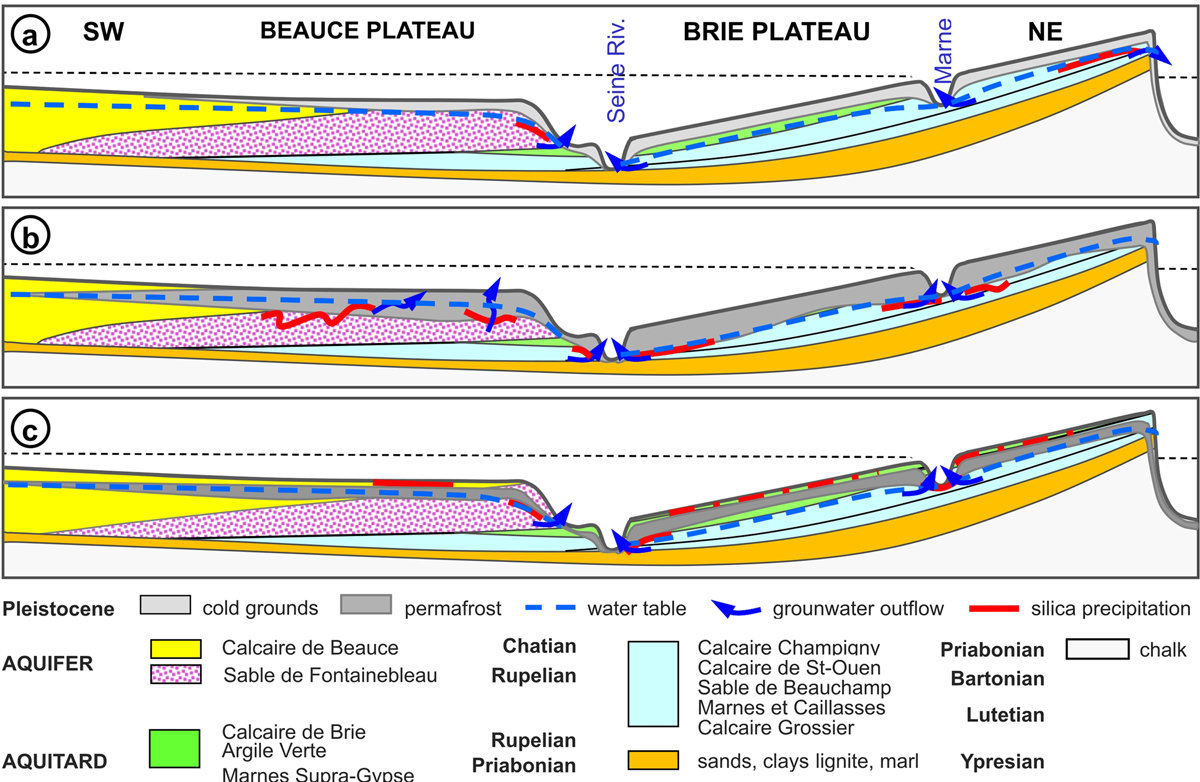Fig. 25

Download original image
Conceptual model of hydrological and thermal arrangements within Paris Basin plateaux during Pleistocene glacial periods. (a) At the beginning of the cold period the chilled grounds remained relatively thin and approached the water table level only in its shallowest areas, near springs. (b) With the cold period ongoing, permafrost developed, and the upper parts of the aquifers froze, resulting in overpressures causing ‘forced’ flows along the undulating base of the permafrost and through cracks and taliks. (c) With climate warming the permafrost thawed at its base and at its top. The active layer thickened. A superficial groundwater formed above the permafrost and flowed towards the lowland area. Note that the gradient of the water table and thickness of the permafrost appear reduced on plateau edges due to an extended vertical scale vs horizontal scale.
Current usage metrics show cumulative count of Article Views (full-text article views including HTML views, PDF and ePub downloads, according to the available data) and Abstracts Views on Vision4Press platform.
Data correspond to usage on the plateform after 2015. The current usage metrics is available 48-96 hours after online publication and is updated daily on week days.
Initial download of the metrics may take a while.




